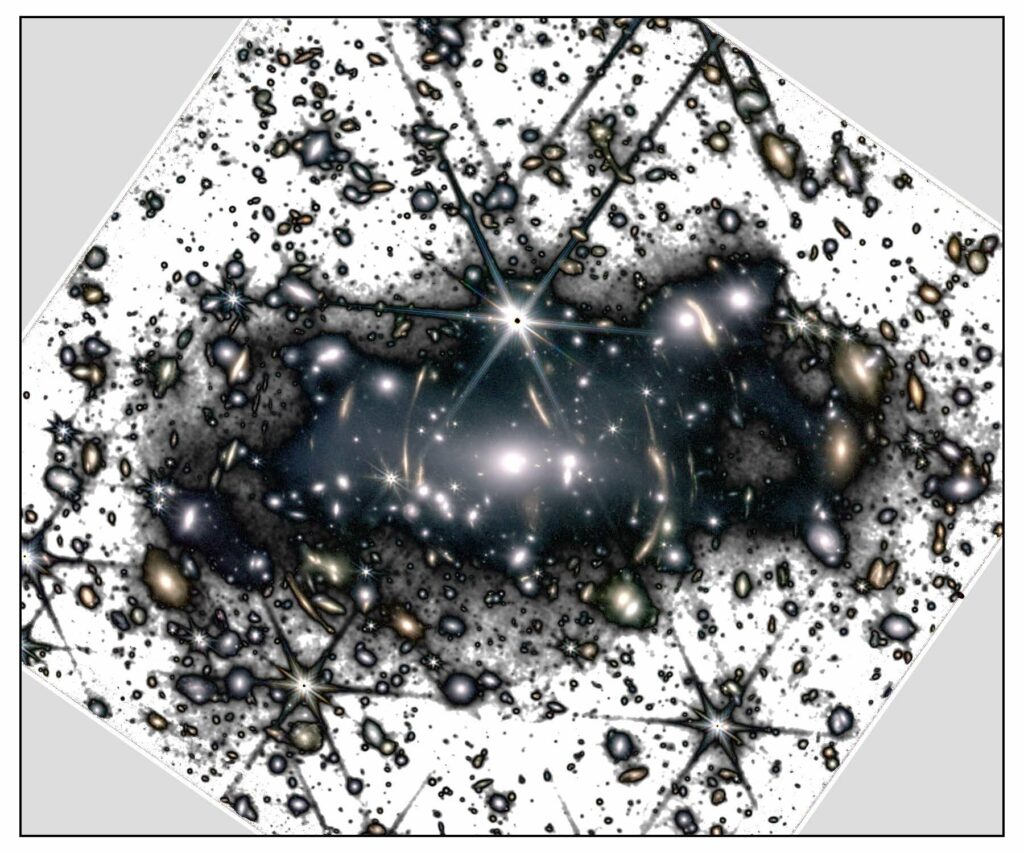Using the James Webb Space Observatory (JWST), American astronomers were able to obtain images of intracluster light in the galaxy cluster SMACS-J0723.3-7327. The images have twice the level of detail compared to the Hubble telescope photos.

The participants of galactic clusters are exposed to a powerful gravitational influence from each other. This leads to the fact that tidal forces “rip out” some of the gas and stars from them, which as a result fall into intergalactic space. The light emitted by them is called an intracluster. Its brightness is less than 1% of the brightness of the darkest sky that can be observed from Earth. Therefore, the intracluster light is not so easy to fix.
To solve this problem, the researchers used the help of JWST. In combination with new methods of image analysis, they were able to identify the “ghostly” light emitted by the intergalactic stars of the SMACS-J0723.3-7327 cluster. The JWST images have twice the level of detail compared to the best Hubble Space Telescope photos.
So far, researchers are still continuing to study the images. But their analysis already showed that the inner parts of the cluster were formed as a result of the merger of massive galaxies, while the outer parts were formed as a result of the accretion of galaxies similar to our Milky Way.
According to the astronomer, JWST images can be used not only to improve understanding of the processes of formation of galactic clusters, but also to study the properties of mysterious dark matter. Intracluster light is an excellent indicator of its distribution in such structures.
Earlier we talked about how JWST photographed clouds on Titan.
According to https://phys.org
Follow us on Twitter to get the most interesting space news in time
https://twitter.com/ust_magazine
